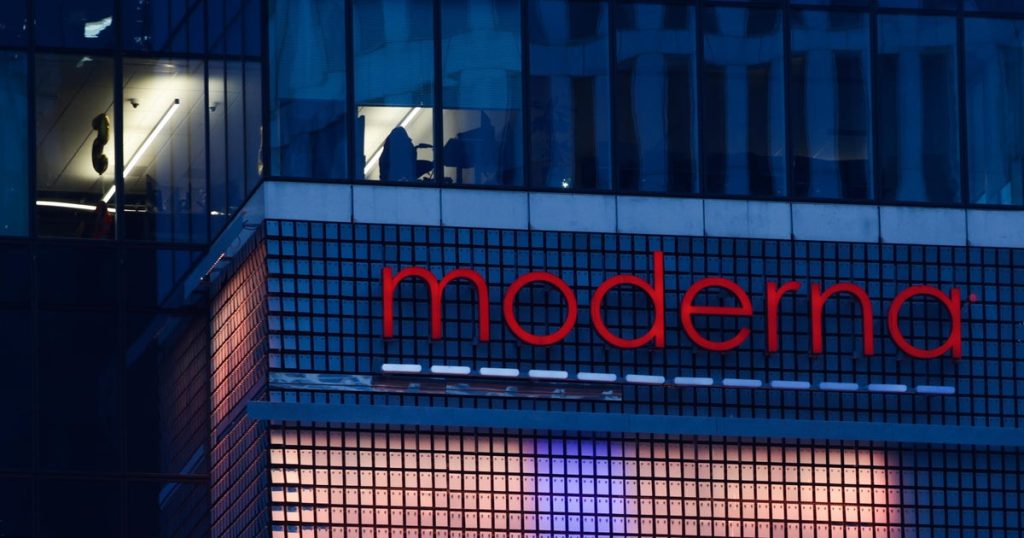The U.S. Food and Drug Administration (FDA) has granted approval for a new COVID-19 vaccine developed by Moderna, marked by specific usage limitations aimed primarily at high-risk groups. Known as mNexspike, this next-generation vaccine offers an alternative option with a lower dosage than its predecessor, Spikevax. The approval signifies a shift in vaccine administration in the U.S., reflecting new public health strategies amidst ongoing developments in the pandemic response.
| Article Subheadings |
|---|
| 1) Overview of the New Vaccine |
| 2) Targeted Approval for High-Risk Individuals |
| 3) Changes in Vaccine Administration |
| 4) Implications of New FDA Guidelines |
| 5) Reactions to New Guidelines and Approvals |
Overview of the New Vaccine
Moderna’s new COVID-19 vaccine, referred to as mNexspike, represents significant progress in the ongoing battle against the virus. This innovative vaccine employs advanced biotechnology to produce a lower dosage compared to its predecessor, Spikevax, making it potentially more accessible for certain populations. The approach aims to enhance immune responses while simultaneously ensuring safety through a refined immune target. The vaccine is intended for adults 65 and older, as well as individuals aged 12 to 64 with pre-existing health issues, thereby expanding the options available for combating COVID-19.
Targeted Approval for High-Risk Individuals
The FDA’s approval deliberately focuses on safeguarding the most vulnerable segments of the population. Specifically targeting individuals aged 65 or older, along with younger adults with specific health conditions, this new directive aims to mitigate severe outcomes associated with COVID-19. The recent approval echoes the FDA’s prior licensing of another vaccine from Novavax under similar constraints, indicating a consistent public health strategy. This concentrated approach reflects a growing concern regarding the efficacy and safety of vaccines particularly aimed at high-risk demographic groups.
Changes in Vaccine Administration
Moderna’s previous vaccine, Spikevax, has been authorized for use across a broader age range, from children aged six months and older. The introduction of mNexspike marks a significant transition in how COVID-19 vaccinations are administered in the United States. While both vaccines may be available in the fall, the more restrictive approval for mNexspike suggests a new paradigm in vaccine rollout, focusing on targeted groups instead of blanket mandates. This change arises amid ongoing analysis of vaccine effectiveness and safety, particularly in areas showing hesitance toward these public health measures.
Implications of New FDA Guidelines
The FDA’s recent decisions signal a shift in vaccine policy intended to address skepticism surrounding COVID-19 vaccines. Health Secretary Robert F. Kennedy Jr. has been an influential figure in this transition, reflecting a broader governmental reassessment of vaccine recommendations. For instance, guidelines have changed regarding children’s vaccinations—moving from a universal recommendation to more specific advisories for those who are moderately or severely immunocompromised. These adjusted recommendations emphasize the necessity of safety evaluations and further research in light of changing perceptions about vaccine safety among parents and guardians.
Reactions to New Guidelines and Approvals
The response to the latest guidelines has been mixed. Some public health officials have expressed concern over the implications of these decisions, arguing that limiting access could be detrimental to overall public health efforts. A federal health official remarked critically on the guidance given by Secretary Kennedy, likening it to arbitrary decision-making devoid of comprehensive expertise. This divide highlights the complexities involved in navigating public sentiment on vaccines, particularly amidst a polarized political landscape.
| No. | Key Points |
|---|---|
| 1 | Moderna’s new vaccine, mNexspike, has been approved for targeted use among high-risk adults. |
| 2 | The FDA’s approval emphasizes a lower dosage compared to the existing Spikevax vaccine. |
| 3 | Recent changes in vaccination guidelines reflect ongoing reassessments of vaccine safety and effectiveness. |
| 4 | The FDA’s recent strategies aim to enhance public health outcomes through focused vaccination efforts. |
| 5 | Public responses to the new guidelines illustrate the polarized landscape surrounding COVID-19 vaccines. |
Summary
The recent approval of Moderna’s mNexspike vaccine highlights a changing approach to vaccine administration focused on high-risk groups. With an emphasis on lowered dosages and specific recommendations, the FDA seeks to navigate the complexities surrounding public health in light of ongoing pandemic challenges. As the landscape of vaccine administration continues to evolve, the reactions to these changes reveal the challenges officials face in aligning scientific guidance with public perception and sentiment.
Frequently Asked Questions
Question: What is mNexspike?
mNexspike is a new COVID-19 vaccine developed by Moderna that uses a lower dosage formulation compared to its existing vaccine, Spikevax.
Question: Who is eligible for the new vaccine?
The FDA has approved mNexspike for adults aged 65 and older, as well as for individuals aged 12 to 64 who have at least one health condition that increases their risk from COVID-19.
Question: How do the new guidelines impact vaccination recommendations?
Recent changes in vaccination guidelines recommend narrowing the focus of vaccination efforts, particularly for children, suggesting vaccinations should primarily target those who are immunocompromised, rather than a blanket recommendation for all children.


